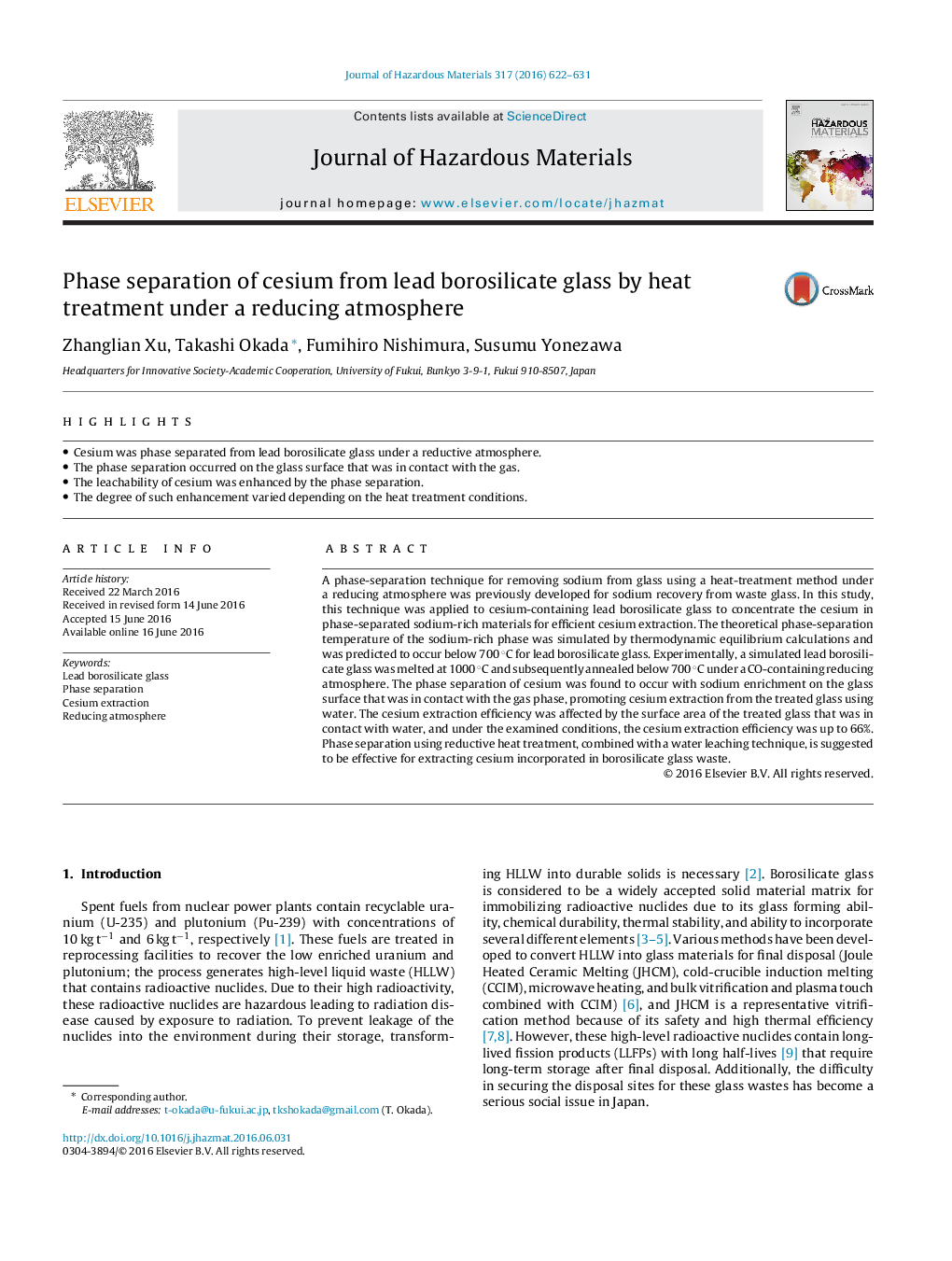| Article ID | Journal | Published Year | Pages | File Type |
|---|---|---|---|---|
| 6970354 | Journal of Hazardous Materials | 2016 | 10 Pages |
Abstract
A phase-separation technique for removing sodium from glass using a heat-treatment method under a reducing atmosphere was previously developed for sodium recovery from waste glass. In this study, this technique was applied to cesium-containing lead borosilicate glass to concentrate the cesium in phase-separated sodium-rich materials for efficient cesium extraction. The theoretical phase-separation temperature of the sodium-rich phase was simulated by thermodynamic equilibrium calculations and was predicted to occur below 700 °C for lead borosilicate glass. Experimentally, a simulated lead borosilicate glass was melted at 1000 °C and subsequently annealed below 700 °C under a CO-containing reducing atmosphere. The phase separation of cesium was found to occur with sodium enrichment on the glass surface that was in contact with the gas phase, promoting cesium extraction from the treated glass using water. The cesium extraction efficiency was affected by the surface area of the treated glass that was in contact with water, and under the examined conditions, the cesium extraction efficiency was up to 66%. Phase separation using reductive heat treatment, combined with a water leaching technique, is suggested to be effective for extracting cesium incorporated in borosilicate glass waste.
Keywords
Related Topics
Physical Sciences and Engineering
Chemical Engineering
Chemical Health and Safety
Authors
Zhanglian Xu, Takashi Okada, Fumihiro Nishimura, Susumu Yonezawa,
